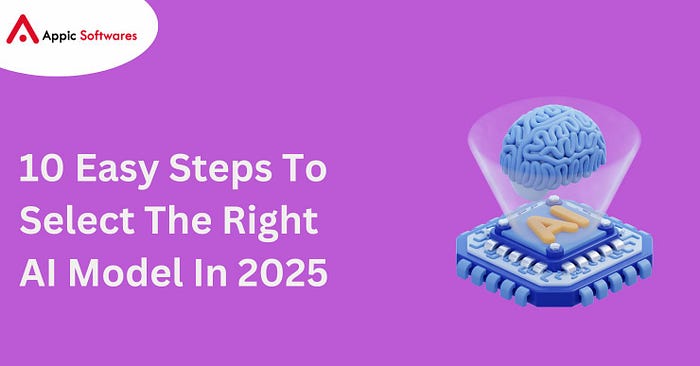10 Easy Steps To Select The Right AI Model In 2025

Artificial intelligence (AI) is transforming the computer industry, driving significant changes across sectors and expanding the boundaries of what technology can achieve. But in the middle of all the excitement, you may be asking yourself, “What is an AI model exactly, and why is selecting the right one so important?”
A mathematical framework known as an artificial intelligence (AI) model enables computers to learn from data and make predictions or choices without requiring specific programming for each task. They are the AI’s internal engines, converting unprocessed input into insightful knowledge and useful decisions. These models include the Google-created LaMDA, which can discourse on any subject, and the OpenAI-developed GPT models, which are excellent at producing writing that seems human. Every model has advantages and disadvantages that make it more or less appropriate for certain tasks.
It might be hard to choose from the vast array of AI models available, but the secret to maximizing the benefits of AI for your particular application is to comprehend these models and make the appropriate decision. Making an educated decision could create the difference between an AI system that meets your goals and one that handles your issues inefficiently. In today’s AI-transformed landscape, success requires thoughtful evaluation and selection of tools that align with your specific objectives. Selecting the appropriate AI model is thus an essential first step in your AI journey, regardless of whether you are a retail company trying to optimize operations, a healthcare provider hoping to improve patient outcomes, or an educational institution hoping to enhance learning experiences.
This guide clarifies these options to help you make the best choice.
What Is An AI Model?
An artificial intelligence model analyzes and processes data to replicate human cognitive functions such as learning, problem-solving, decision-making, and pattern recognition. Consider it a digital brain; just as people use their brains to learn from experience, artificial intelligence models employ tools and algorithms to learn from data. This data might include images, text, music, numbers, and more. The model ‘trains’ by looking for trends and relationships in the data. For example, an AI model that detects faces would examine hundreds of photos of faces to identify essential characteristics like the mouth, nose, ears, and eyes.
The AI model may then use fresh data to make judgments or predictions once it has been trained. Let’s use the example of facial recognition to better understand this: Once trained, this kind of model might identify a user’s face and unlock a smartphone.
AI models adapt easily and serve a wide range of applications, including image recognition, predictive analytics, autonomous cars, natural language processing, and image identification (which helps computers recognize objects in images). Legal AI tools can assist legal professionals by providing insights and analysis based on vast legal databases.
Read More — https://appicsoftwares.com/blog/easy-steps-to-select-the-right-ai-model/


.jpg)
Comments
Post a Comment